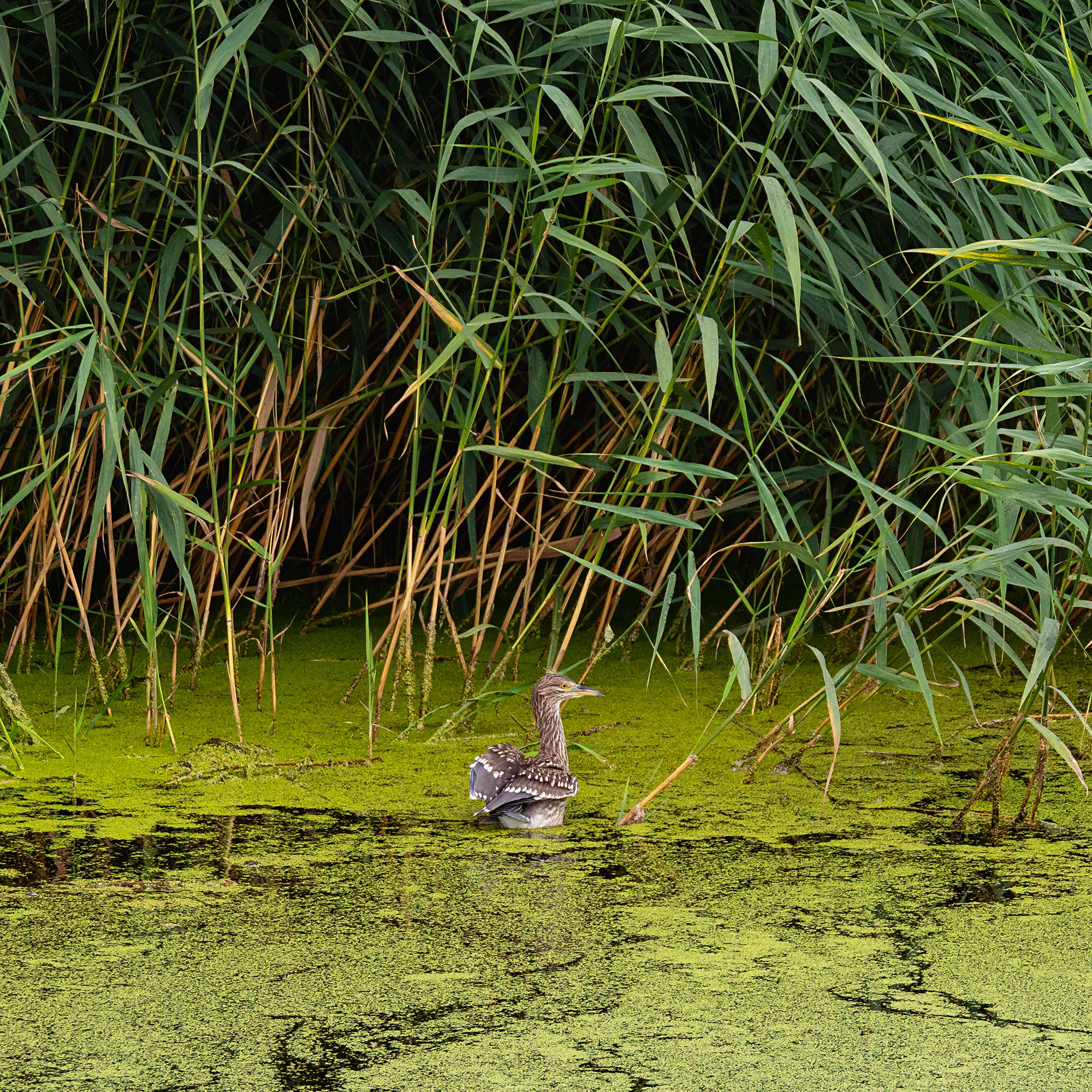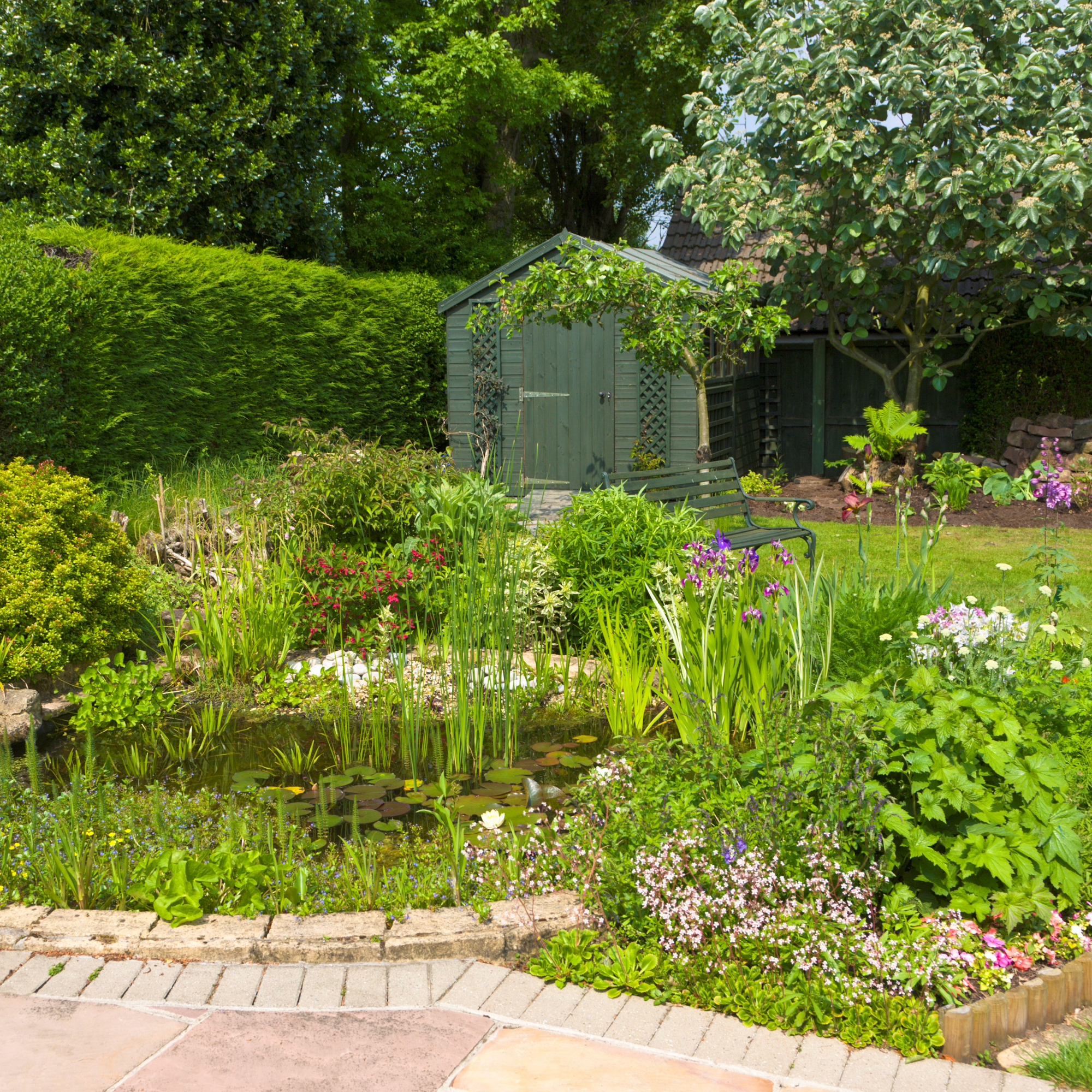
If there's one celeb who's not afraid to tackle a DIY project on themselves, it's got to be Sort Your Life Out host Stacey Solomon. The star loves to share the upgrades she gives to Pickle Cottage where she, partner Joe Swash and their family call home. The latest venture in her roster of home improvements is the Stacey Solomon pond development. It's not simply to act as a water feature, either, as it's also to play host to the family's four ducks.
However, as with just about everything shared on social media these days, it's not been free from concerned voices piping up. While Stacey's followers praised her hard work on the incredibly impressive transformation, a number of people did flag worry over the seemingly excessive algae on the pond's surface.
In fact, Stacey herself called the algae out in the Instagram post's caption, writing, 'Yes the pond is green, we were going to put a filter in & we might still but the ducks love it so we might just let it be full of algae for now.' So is Stacey right in thinking about leaving the algae in place, or could it be the wrong decision and should she be removing the algae instead – we asked the experts to find out.
Is it normal to have algae on ponds?
'Algae occurs naturally in ponds and isn’t necessarily a bad thing,' reassures gardening expert Fiona Jenkins from My Job Quote. In fact, it's expected in new ponds, like Stacey's.
'New ponds that are exposed to bright sunshine are most likely to suffer from algae and although it’s tempting to empty and refill the pond with fresh tap water, this won’t solve the problem. In fact, it may make it worse,' Fiona warns.
'Tap water can encourage algae growth and the fresher the tap water, the more time it’ll take for the pond to find its natural balance. So, even though some have suggested Stacey does this, it’s not the best course of action.'
Instead, the best thing you can do is add a water filter, fountain, UV sterilisation or a mixture of all three!
Adding a UV water steriliser along with your filter is the old standard in keeping your pond free of algae.
A fountain pump will not only help prevent water from going stagnant, but adds a pretty feature, too!
For an all-in-one option, this filter has both a fountain and a UV steriliser. Easy work.
Is the algae ok for ducks to eat?

Really it's all about making sure that the algae on the Stacey Solomon pond is duckweed rather than it's blue-green cousin.
'Algae on duck ponds that is stringy or turns the water into a murky pea soup, as with the Stacey Solomon pond, is much less of a problem and can even have some advantages,' explains Fiona.
'Duckweed is harmless, made up of lots of tiny leaves that ducks love to play in, whereas blue-green algae is very dangerous,' adds James Ewens from garden furniture pros Alexander Francis. 'Toxic to most animals including waterfowl, blue-green algae can be identified by discoloured water, a foul odour, and a scum-like substance on top of the water.'
However, algae is often built up by duck poo, so even if Stacey is definitely dealing with duckweed, it may get a bit overbearing as a result. 'Algae are tiny plants that feed on nitrates and phosphates. Poo from ducks and fish increases these nutrients,' explains Fiona.
'Ideally, you want to add some oxygenating plants and encourage a range of aquatic insects and molluscs – which the ducks will also love – to help the pond to manage itself.'
So it looks like Stacey can breathe easy knowing her algae isn't the toxic kind, although she may need to keep an eye on the spread.
How to remove or reduce algae

'The downside to algae is that it grows thick and fast, and this can lead to fish dying as the oxygen levels depleting in the water,' warns Kevin Gess, gardening expert at Prestige Lawns. 'It also can look unsightly, as it can grow into thick mats and make a pond look unattractive and unclean.
Stacey, or anyone will an algae explosion, might wish to start getting rid of it sooner rather than later.
'In this case physical removal is your best bet, using a net or rake to get the bulk of it out of the way,' comments James on Stacey's algae. 'Then you can focus on preventative measures.'
'A pond filter could be incredibly beneficial in maintaining the algae growth in Stacey’s pond as it will help maintain the water quality and clarity,' adds gardening expert Kevin. 'It will help remove debris, contaminants and excess nutrients in the water, which can cause algae growth.'
Additionally there are natural preventatives, too.
'Introducing some planting in and around your pond will also help to reduce algae,' says Fiona. 'It takes time for a pond to become established with plants but once it has, it should manage the algae on its own. In the meantime, you can add barley straw to a new pond to stop algae growing. However, this is best done in spring, before the algae appears.
Add this to your pond in spring so you can naturally ward off algae before if starts to grow for the season.
So there we have it, while the algae on the Stacey Solomon pond should be fine for the ducks to ingest, she'll want to keep in controlled so she keeps the ecosystem healthy. With a few simple (compared to the making of the pond!) tricks, this'll be done in no time.







